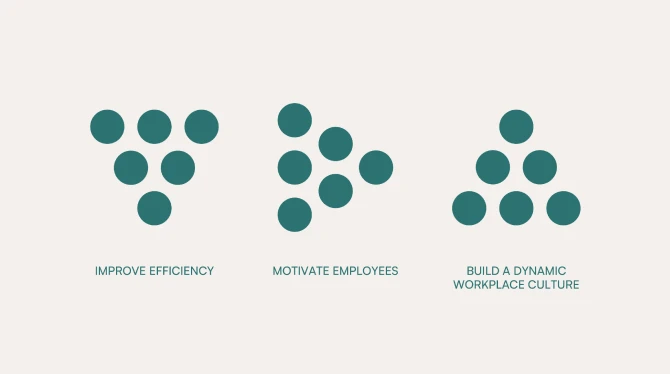🔀
The Difference Between Rebranding And A Brand Refresh
LAST UPDATED 22 May, 2024
Evolving and improving your brand is crucial to staying relevant. This evolution can take the form of a rebranding or a brand refresh, each serving distinct purposes in the lifecycle of a brand. Let’s dig into the differences and reasons why to do one or the other.
The Essential Difference
Rebranding is a comprehensive overhaul of a brand’s identity, positioning, and strategy. It involves changing fundamental aspects like the name, logo, and brand narrative to reflect a new direction or to recover from negative associations. This process is about redefining who you are as a brand and how you wish to be perceived in the marketplace. It can often be a result of a strategic pivot.1
A brand refresh is akin to giving your brand a facelift. It updates and refines the brand’s current elements, such as its visual identity and messaging, to enhance recognition and relevancy. A refresh keeps the core brand identity intact while making it more contemporary and aligned with current customer expectations and trends.
Identifying The Need: When To Rebrand vs. Refresh
When To Rebrand
- Significant changes in business direction: If your business undergoes a pivot or expands into new markets, a rebrand may be necessary to communicate your new focus effectively.
- Outdated brand identity: A brand that feels outdated or no longer reflects the company’s values and offerings might need a rebranding to stay competitive.
- Recovering from negative perceptions: Companies looking to distance themselves from past controversies or negative public perceptions might opt for a rebrand.
- New opportunities: If a company is in an evolving industry or market, changes in the industry or niche can impose new opportunities that can catalyze a need for a rebrand.
When To Refresh
- Modernizing brand elements: If your brand feels slightly outdated but still relevant, a refresh can modernize your visuals and messaging without altering the core identity.
- Strengthening market position: A refresh can be a strategic move to solidify your market position, especially if your core brand values and identity remain strong.
- Attracting more target groups: Refreshing your brand can also be an effective strategy for appealing to new segments of your target market without alienating your existing customer base.
The Difference In Execution
Executing A Rebrand
A rebrand requires a deep dive into market research, stakeholder interviews, and competitive analysis to redefine the brand’s strategy, identity, and positioning. This involves:
- Redefining brand mission, vision, and values.
- Developing a new logo, and visual identity, sometimes even a new name.
- Launching a comprehensive marketing strategy to introduce the rebranded entity.

Executing A Brand Refresh
A refresh focuses on updating the visual elements and messaging to enhance the brand’s appeal. Key steps include:
- Tweaking or redesigning the logo and design elements for a modern look.
- Refining the brand’s messaging to ensure clarity and relevance.
- Implementing the updated branding across all marketing materials and digital platforms.

Explore further steps on how to transform your brand.2
Impact On Stakeholders
Rebranding can have a profound impact on both internal and external stakeholders. Internally, it requires buy-in from employees and alignment with the company’s future direction. Externally, customers, partners, and investors need to be reassured that the rebrand represents positive change. Effective communication and engagement strategies are critical to maintaining trust and loyalty.
A Brand Refresh on the other hand, tends to be less disruptive and can often reinvigorate stakeholder enthusiasm for the brand. It signals commitment to improvement and relevance, which can enhance brand perception and loyalty among customers and employees alike.
Challenges And Pitfalls
Whether embarking on a rebrand or a brand refresh, businesses face multitudes of challenges that can affect the desired outcome. Understanding these potential hurdles is crucial for navigating the process successfully.
- Loss of Brand Equity: Both rebranding and refreshing risk diluting established brand equity if not executed with sensitivity to the brand’s history and customer expectations. This happened to Gap in 2010.3

- Alienating Existing Customers: Dramatic changes in brand identity or messaging can disconnect existing customers who have developed an affinity for the brand’s current presentation, potentially pushing them toward competitors.
- Market Confusion: Effectively communicating the evolution of the brand is crucial to avoid market confusion. Whether it’s a complete rebrand or a subtle refresh, customers must understand the rationale behind the changes to embrace them.
- Internal Alignment and Adoption: Ensuring that all internal stakeholders are on board and accurately reflect the updated brand can be a significant challenge. Any disconnect can undermine the brand’s unified presentation to the market.
- Ensuring Consistency: Maintaining consistency across all touchpoints is essential for a seamless brand experience. Inconsistencies can lead to a fragmented brand image that undermines trust and professionalism.
- Measuring Impact: Assessing the effectiveness of a rebrand or refresh involves determining appropriate metrics and analyzing changes in brand perception, customer engagement, and market position, which can be complex and nuanced.
Navigating these challenges requires a strategic approach, focusing on clear communication, careful planning, and sensitivity to the brand’s existing equity and customer relationships.
Making The Right Choice
Deciding between a rebrand and a refresh involves careful consideration of your brand’s current position, long-term strategy, and the perceptions of your stakeholders.
What To Do
- A rebrand might be the right choice if your company is undergoing significant change or needs to distance itself from a negative past.
- A refresh is more suitable for brands that are fundamentally strong but need to update their image to stay competitive.
To start executing either project, conduct market research, consider stakeholder implications, devise a meticulous strategy, and hire or appoint a team to follow through and deliver this project at the highest possible quality.
Whether choosing to rebrand or to refresh, the goal is to strengthen your brand’s connection with its audience, ensuring it remains relevant, competitive, and aligned with its vision and values.


